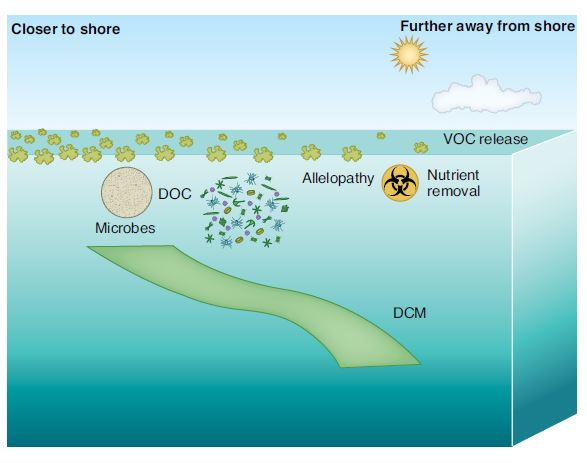April 21, 2022 | Nature Ecology & Evolution | Source |
Introduction: To combat climate change, ocean afforestation is being explored as a method of carbon dioxide removal (CDR) by introducing coastal seaweed into deep ocean waters for carbon sequestration. Researchers from Australia, UK and US examine how such technique could impact marine ecosystems in several ways.
Key findings: There are two main approahces to CDR: direct and indirect. Direct methods such as ocean iron fertilization (OIF) involve altering marine life to increase carbon storage. Indirect methods, such as ocean alkalinity enhancement (OAE), change ocean chemistry to absorb more CO2. Each method has different effects on marine ecosystems.
Ocean afforestation stands out because it introduces coastal macroalgae (seaweed) to offshore areas, potentially creating new ecological dynamics. This method could alter nutrient levels, carbon cycles, and microbial communities in the ocean. Model simulations of seaweed dispersal show that while initial impact might be limited, long-term effects are uncertain. The research concludes that comprehensive studies and modelling are needed to predict how introduced seaweed will affect offshore ecosystems, and to balance the benefits of carbon sequestration with potential ecological impacts to ensure safe marine carbon dioxide removal strategies.
Figure | Schematic illustrating the potential ecological consequences of the offshore transport and dispersal of macroalgal rafts. These effects will take place during the purposeful multimonth occupation of open ocean waters. Ocean afforestation side effects may have direct and indirect influences on offshore food webs. Direct effects include allelopathy (that is, chemical ecological competition between macroalgae and microalgae (green cells), represented simplistically by a chemical hazard symbol) and coastal microbial colonization of oceanic waters originating from the macroalgal biome (denoted by the stippled disc symbol). Indirect effects include alteration of seawater properties (nutrient removal), release of macroalgal DOC (impacts on oceanic microbes) and VOCs (cloud symbol), altered light climate (reflectance) and underwater light penetration. Research into the implications of VOC release for lower atmosphere processes is in its infancy and represents a major unknown1. Reduced light penetration in the water column due to shading from macroalgal rafts may impact the location and functioning of the DCM, denoted by the green subsurface layer, deepening offshore due to a higher density of macroalgal rafts (more underwater shading). The DCM is a subsurface niche set jointly by underwater irradiance levels and subsurface nutrient supply.





